 SPECIAL REPORT FROM BOGALE, BURMA
SPECIAL REPORT FROM BOGALE, BURMAVictims vanish in the disaster that dare not speak its name
IT IS a disaster still shrouded in secrecy.The world is growing accustomed to seeing images of devastation, from earthquakes or calamitous storms, as they unfold.Here the military dictatorship continues to cordon off the areas worst hit by Cyclone Nargis on May 3, so little is known about the extent of the devastation, how aid is reaching those in need-or extraordinary stories of survival and death like that of Than Lwin.When the surging water ripped apart his house, he and his family scrambled on to their small boat in a futile attempt to outrun the cyclone. The boat capsized when a giant wave crashed on to it, and Than Lwin began a six-hour battle for his life, grasping for anything that would keep him afloat amid the churning seawater. "The water was so high, sometimes I touched the tops of trees," he said. When the storm finally passed at dawn, Than Lwin was miles away from home, on Main Ma Hla island in the mouth of the Irrawaddy Delta.He and 26 other survivors found a boat that was intact and used their hands to paddle to the mainland, passing dozens of bodies along the way. Of the 7,000 people who lived in his village,only 600 survived.His parents and siblings disappeared, and he assumes they are dead.With so little information coming from the vulnerable villages along the coast, the extent of the damage and the death toll may never be known. But it is possible to piece together from scattered accounts from survivors, diplomats and aid groups a picture of a storm of immense power followed by a woefully inadequate rescue effort.On Wednesday, the International Committee of the Red Cross, which has assisted in virtually every conflict and disaster for decades estimated up to 127,990 people had died. With cases of cholera now being reported, the fate of up to 2.5 million people left clinging to survival hangs in the balance.The military government that has kept a tight grip on this country for more than four decades has tried to keep foreign eyes, and cameras, away from the epicentre of the damage. The police blockaded the lower reaches of the delta, setting up checkpoints at bridges along the few roads that link it to Rangoon, the commercial capital.With few exceptions, foreigners are barred from entering the area. This reporter, whose name is being withheld to avoid detection by the government, was able to reach some, but not all, of the worst-affected areas by hiding in the bottom of a boat.The major southern towns of the Irrawaddy Delta – Bogale, Pyapon and Labutta – suffered severe damage in the storm, but it is the hundreds of fishing and rice-farming villages closer to the sea where the greatest number of people died. In those villages, where houses are typically made of bamboo lashed together with thin strips of wood, survivors are counted in the hundreds and the dead in the thousands."The only thing left is the ground," said Tin Nyunt, a betel nut seller in Bogale, referring to two villages near the sea, Hi Gyi and Maw Kyune."Everything else was blown away." When the skies darkened in the early afternoon of May 2, those affluent enough in this impoverished area to own radios only heard reports from state broadcasters about the arrival of strong winds."The wind sounded like an airplane engine," said Daw Sein, a relatively affluent rice farmer who rode out the storm in her sturdy teak-frame house with water up to her waist. Others said the wind was so loud that you could not hear someone shouting next to you. "You couldn't even hear the sound of a tree trunk cracking," said Myint Oo, the headman of Ma Ngay Gyi, where more than 250 villagers were killed. When the storm hit land in the late afternoon, heading due east, it was a Category 4 cyclone, the second most dangerous type, with winds reaching 155 mph.In the early evening, as the storm travelled over the delta, villagers stood huddled together in their houses as a series of waves crashed down, each larger than the last. Like the tsunami of 2004, some waves were higher than eight feet, villagers said; but unlike the tsunami, the largest waves struck at night, leaving villagers scrambling to survive in the dark. Kyaw Swe, a clothing trader, said his bamboo house started shaking so violently during the storm that he went outside. But when he waded into the paddies, a giant wave swept him away. He was transported by the water about a mile from his home before he was able to grab on to a tree branch."Nobody and nothing could help me – except the tree," he said, squatting near the spot where his house once stood. Myint Oo, the village headman, said the most vulnerable were those who lived in open areas. The majority of victims in his village were those living in huts in the rice fields who tried to run back to the village. After the storm, he recovered 70 of their bodies and buried them in mass graves. The rest of the bodies had been washed away. During three days of travelling by boat in the delta a week after the storm, this reporter saw 66 bodies floating in canals or hidden among shrubs along riverbanks.But the question remains: where have the thousands of bodies gone? There appear to be no pictures of fields of bodies as in the tsunami in 2004. Pictures taken immediately after the storm show dozens of bodies in the area around Labutta on May 3 and 4. But villagers interviewed say emphatically that the death toll was high, but as happened on the west coast of Indonesia in direct line of the tsunami three years ago, most of the dead were washed out to sea. The inability to retrieve bodies has compounded the grief of people who lost family members. Zaw Ayea, who is 27, was at his boss's house during the storm. When he returned to his destroyed home, he found his sister's body. His mother and two younger brothers are missing and presumed dead. That is the account given by his friends; Zaw Ayea cannot speak. He stares straight ahead with a strangely placid expression on his face.His friends say he has been in shock since the cyclone. Although some of them smile when they talk to a visitor, villagers are clearly scarred by the death all around them. "There is a ghost here at night, every night," said Khin Maung Win, a farmer in the village of Gwe Choung, where half the population of 200 was killed by the storm. The ghost, he says, throws rice in his face.San Nge, who at 81 is the oldest survivor interviewed for this article, says that the day after the storm he heard a girl shouting for help. "I went over, and no one was there," he said.For most villagers in the southern parts of the delta there was nowhere to hide when the storm hit. The delta is a vast, low-lying series of peninsulas and islands that even in the driest of periods of the year are flush with water. Residents of the delta travel almost everywhere by boat.Before the mid-19th century, the area was a thinly inhabited swamp. But the British colonial rulers saw this as an ideal place to cultivate rice and help feed their empire. They built dykes and drained the land. In the twilight years of British rule, colonial Burma was the world's largest rice exporter and millions of Burmese moved here to cultivate the rich alluvial soil. The government says that 6.3 million people lived in the delta before the storm.It will not take much to get villagers back on their feet in these areas because they had so little to begin with. Being affluent in the delta means having some furniture and a house made of concrete or hardwood instead of bamboo.Farmers till their fields with buffalo pulling a plough. Now they lack both buffaloes and rice seed. During this reporter's period spent in the delta, several times as many buffaloes could be seen floating dead on the water as were grazing on land. Villages in the delta often have dedicated ponds and large ceramic jars to store drinking water. Many of those jars have broken and the pond water has been blackened from the hay and foliage rotting in it.Distribution of food to the destitute villagers has been uneven, where it exists at all.Some villages say they have not seen anyone from the government, while others say the military gave them rations of rice to last a few days.In the city of Bogale, where most houses lost their roofs, residents said the military supplied each household with three cups of rice immediately after the storm. Then the army began selling portions of rice for 600 kyat, about 55 cents.A motorcycle taxi driver said he had seen only two foreign aid workers since the storm. The military's policy has been to allow foreign aid but bar foreign disaster relief experts. In refugee camps there appears to be enough rice, partly because wealthy Burmese have been dropping off bags of food in recent days. Than Lwin, who now sleeps on the concrete floor of a Buddhist temple that serves as a makeshift camp for refugees, is starting from zero. He was naked when he landed on Main Ma Hla island because the storm had ripped off all of his clothes. He now has a shirt and sarong but still needs a blanket. Twenty-six years old, he has no plan. "I have nothing," he said. "I will do anything to survive."
As in the days of Noah....




































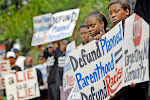

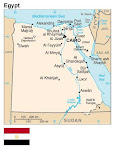















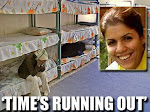








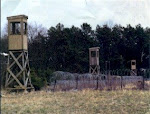






















.bmp)



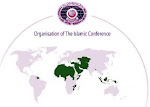







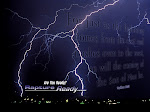







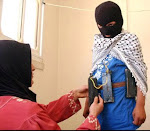

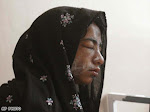



.bmp)